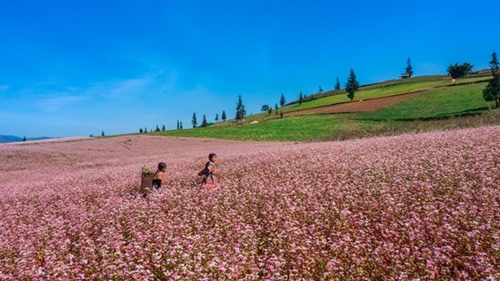According to the provincial Department of Culture, Sports and Tourism, Ha Giang takes cultural heritage as a resource for tourism growth with special values that can create attractive products and draw tourists.
    |
 |
|
Ha Giang is honored as the “Asia's Leading Emerging Tourism Destination” by World Travel Awards in 2023. (Photo: vietnamnet.vn) |
Right in 2022 when Vietnam reopened the tourism market, Ha Giang welcomed more than 2.2 million visitors and earned 4.53 billion VND (185.99 million USD) from them. The figures rose to 3 million and 7.09 trillion VND, respectively, in 2023.
The higher number of tourists has made an important contribution to the province's GDP growth, contributing to poverty reduction and improving the living conditions of locals, especially in ethnic minority-inhabited areas.
In order to preserve and promote the values of cultural heritage sites in association with tourism development, Ha Giang plans to boost the communication work on the meaning and significance of cultural heritage conservation, while focusing on restoring cultural relics, traditional festivals, and cultural practices, and promoting community-based tourism, according to the department.
Ha Giang is home to more than 20 ethnic groups such as H'mong, Tay, Dao, Nung, and Giay who have their own traditional culture, lifestyle and customs, plus exciting festivals for visitors and researchers.
The region boasts many historical relics and majestic landscapes, such as the Heaven Gate, the Quan Ba double mountains in Quan Ba district; the H'mong King’s Vuong Palace, the Lung Cu National Flag Pole in Dong Van district; the Ma Pi Leng Pass in Meo Vac district; and picturesque terraced fields in Hoang Su Phi. They attract many visitors to come for fun or for research.
In 2010, the Dong Van Karst Plateau in Dong Van district was officially recognized by the UNESCO as a global karst geo-park, the first of its kind in Vietnam and the second in Southeast Asia (after the Langkawi Park in Malaysia).
Source: VNA